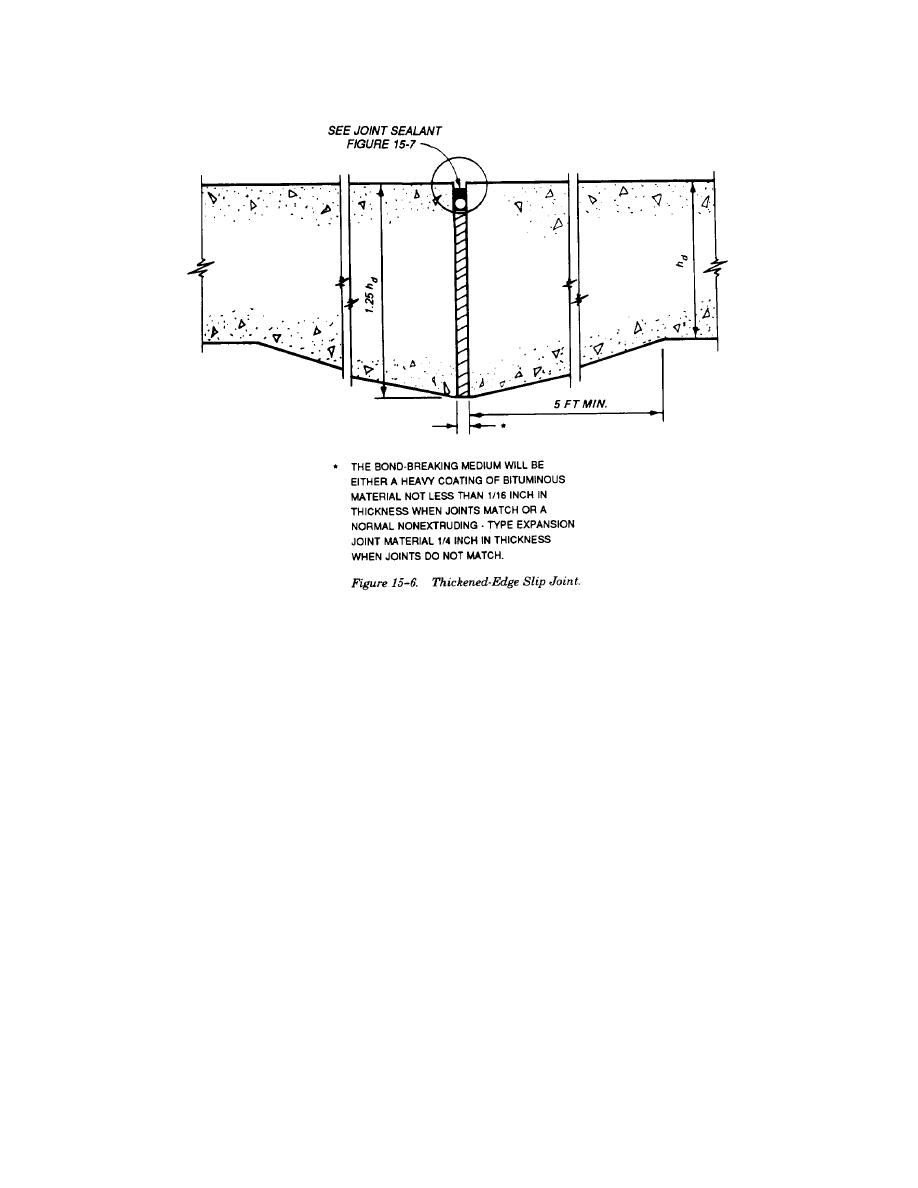
TM 5-822-5/AFM 88-7, Chap. 1
a. Contraction joints. Weakened-plane contrac-
pavements 12 inches or less, and 3 inches for
tion joints are provided to control cracking in the
pavements greater than 12 and less than 18 inches
concrete and to limit curling or warping stresses
in thickness. In no case will the depth of the groove
resulting from drying shrinkage and contraction and
be less than the maximum nominal size of aggregate
from temperature and moisture gradients in the
used. Concrete placement conditions may influence
pavement, respectively. Shrinkage and contraction
the fracturing of the concrete and dictate the depth
of the concrete cause slight cracking and separation
of groove required. For example, concrete placed
of the pavement at the weakened planes, which will
early in the day, when the air temperature is rising,
provide some relief from tensile forces resulting
may experience expansion rather than contraction
from foundation restraint and compressive forces
during the early life of the concrete with subsequent
caused by subsequent expansion. Contraction joints
contraction occurring several hours later as the air
will be required transversely and may be required
temperature drops. The concrete may have
longitudinally depending upon pavement thickness
attained sufficient strength before the contraction
and spacing of construction joints. Instructions
occurs so that each successive weakened plane does
regarding the use of sawcuts or preformed inserts to
not result in fracturing of the concrete. As a result,
form the weakened plane are contained in TM 5-
an excessive opening may result where fracturing
822-7.
does occur. To prevent such an opening, the depth
(1) Width and depth of weakened plane
of the groove will be increased to one-third of the
groove. The width of the weakened plane groove
slab thickness to assure the fracturing and proper
will be a minimum of c inch and a maximum equal
functioning of each of the scheduled joints.
(2) Width and depth of sealant reservoir. The
to the width of the sealant reservoir. The depth of
the weakened plane groove must be great enough to
width and depth of the sealant reservoir for the
cause the concrete to crack under the tensile
weakened plane groove will conform to dimensions
stresses resulting from the shrinkage and contrac-
shown in figure 15-7. The dimensions of the sealant
tion of the concrete as it cures. Experience, sum
reservoir are critical to satisfactory performance of
ported by analyses, indicates that this depth should
the joint sealing materials.
be at least one-fourth of the slab thickness for
15-11



 Previous Page
Previous Page
